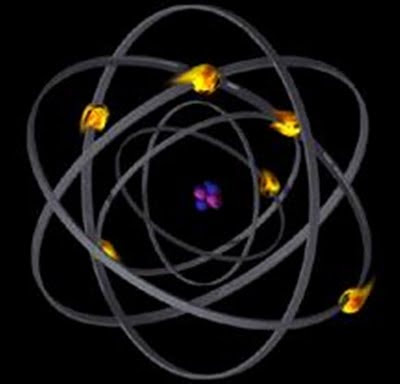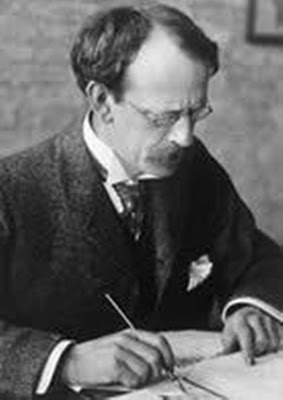Education
 Protons are subatomic particles that, with neutrons and electrons, are the principal constituents of atoms.
Protons are subatomic particles that, with neutrons and electrons, are the principal constituents of atoms.
Protons are positively charged atoms that reside in the nucleus of an atom. These protons add the overall positive charge of a molecule. The mass of the proton is about 1,840 times the mass of the electron.
Through scientific discovery, protons have been accepted as the atom that contributes to the positive charge of an atom. The discovery of protons can be attributed to Rutherford.
In 1886 Goldstein discovered existence of positively charged rays in the discharge tube by using perforated cathode. These rays were named as anode rays or cannal rays.
In 1899, Rutherford discovered alpha and beta ‘rays’ from uranium. He later demonstrated that alpha rays are the nuclei of helium atoms. He discovered in 1914 that the nucleus of an atom constituted and extremely dense but small fraction of the volume of an atom and that this nucleus was positive in charge.
Given the discoveries of electrons in 1897 by Thomson, Rutherford and other scientists decided that a positively charged atom must exist to center the electron to create equally neutral atoms.
Thompson proposed the name ‘positive rays’. Rutherford, in 1914, suggested that this something that was positively charged or the sportive ray of Thompson was a particle.
He gave the name ‘positive electron’ to it. The word ‘proton’ was assigned to this particle by 1920.
Rutherford continued to do research until his death, but the proton was his last big discovery.
Discovery of Protons
- Double And Triple Bonds In Vsepr Theory
Molecular geometry is determined by possible locations of an electron in a valence shell, not by how many how many pairs of valence electrons are present. To see how the model works for a molecule with double bonds, consider...
- Predicting The Shapes Of Molecules
There is no direct relationship between the formula of a compound and the shape of its molecules. The shapes of these molecules can be predicted from their Lewis structures, however, with a model developed about 30 years ago, known as the valence-shellelectron-pair...
- Formation Of H2o Molecule(bonds)
H2O molecule contains two Hydrogen atoms linked with a Oxygen atom. So we can describe the formation of Water molecule bond either by valence shell electron pair repultion theory or by Hybridization concept. ...
- Millikan, Robert Andrews (1868-1953)
US physicist, who was awarded the 1923 Nobel prize for Physics for his determination of the charge of a single electron and for validating Albert Einstein photoelectric equation. He also made important contribution to American science as an educator,...
- Discovery Of Ions
The person who gives a theory of ions is Michael Faraday. It’s around 1830. He describes the portions of molecules that move from anode to cathode or vice versa. He discovered that certain substances when dissolved in water conduct an electric current....
Education
Discovery of Protons
Protons are positively charged atoms that reside in the nucleus of an atom. These protons add the overall positive charge of a molecule. The mass of the proton is about 1,840 times the mass of the electron.
Through scientific discovery, protons have been accepted as the atom that contributes to the positive charge of an atom. The discovery of protons can be attributed to Rutherford.
In 1886 Goldstein discovered existence of positively charged rays in the discharge tube by using perforated cathode. These rays were named as anode rays or cannal rays.
In 1899, Rutherford discovered alpha and beta ‘rays’ from uranium. He later demonstrated that alpha rays are the nuclei of helium atoms. He discovered in 1914 that the nucleus of an atom constituted and extremely dense but small fraction of the volume of an atom and that this nucleus was positive in charge.
Given the discoveries of electrons in 1897 by Thomson, Rutherford and other scientists decided that a positively charged atom must exist to center the electron to create equally neutral atoms.
Thompson proposed the name ‘positive rays’. Rutherford, in 1914, suggested that this something that was positively charged or the sportive ray of Thompson was a particle.
He gave the name ‘positive electron’ to it. The word ‘proton’ was assigned to this particle by 1920.
Rutherford continued to do research until his death, but the proton was his last big discovery.
Discovery of Protons
- Double And Triple Bonds In Vsepr Theory
Molecular geometry is determined by possible locations of an electron in a valence shell, not by how many how many pairs of valence electrons are present. To see how the model works for a molecule with double bonds, consider...
- Predicting The Shapes Of Molecules
There is no direct relationship between the formula of a compound and the shape of its molecules. The shapes of these molecules can be predicted from their Lewis structures, however, with a model developed about 30 years ago, known as the valence-shellelectron-pair...
- Formation Of H2o Molecule(bonds)
H2O molecule contains two Hydrogen atoms linked with a Oxygen atom. So we can describe the formation of Water molecule bond either by valence shell electron pair repultion theory or by Hybridization concept. ...
- Millikan, Robert Andrews (1868-1953)
US physicist, who was awarded the 1923 Nobel prize for Physics for his determination of the charge of a single electron and for validating Albert Einstein photoelectric equation. He also made important contribution to American science as an educator,...
- Discovery Of Ions
The person who gives a theory of ions is Michael Faraday. It’s around 1830. He describes the portions of molecules that move from anode to cathode or vice versa. He discovered that certain substances when dissolved in water conduct an electric current....
